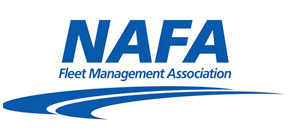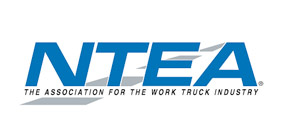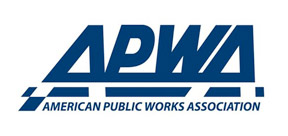Blue Envelope program creates safer interactions between officers and drivers with autism

The Massachusetts State Police department recently teamed up with the Massachusetts Chiefs of Police Association, Advocates for Autism of Massachusetts and The Arc of Massachusetts to launch Blue Envelope, a program that helps law enforcement easily recognize drivers who are on the autism spectrum – hopefully leading to a positive interaction.
The blue envelope holds the driver’s essential information, such as his or her driver’s license, registration and contact card. It also contains important communication guidelines to help police officers in their interactions with autistic motorists.
After hearing of a proposed bill to mandate the Blue Envelope program in Massachusetts, the state police decided not to wait for it to pass legislation and began researching it on their own, calculating the number of drivers who were within the possibility of being on the autism spectrum in the state: The number was 18,000.
After looking into the program and realizing it was already being used throughout the country, Trooper Derek Henneberry delved even further.
“I began to collect samples of the envelopes from other police departments and spoke to numerous other departments about how their program is going and the steps they took to get it off the ground,” he explained.
The state police legal department and some of its partners began to work on blue envelope designs before deciding on the one currently in circulation.
“A key feature on our envelope is the QR code,” Henneberry said. “Scanning this code will bring you directly to our website, where more information can be found. And there are tips for both officers and drivers and the ability to request envelopes directly.” The barcode feature also allows the department to update the website whenever necessary.

The program officially launched in April 2024. Special training was not necessary, since officers and troopers already receive a variety of training related to autism.
Officers simply needed to be made aware of what the blue envelope is, which the state police did with a job-wide training bulletin.
“With just the mailing request alone, through the website, we have mailed out 2,900 blue envelopes since the launch,” he stated. The number does not include envelopes given to state police barracks or local departments.
Envelopes have also been given to autism organizations, driving schools and developmental organizations.
The city of Marblehead recently joined the Blue Envelope program.
“When the Massachusetts State Police announced it last year, I put out a statement in support of it and asked officers to become familiar with it in case they came across one, and they thought that it was a great idea,” Marblehead Police Chief Dennis King explained. “This year I decided to get the school resource officer involved, and we ordered the envelopes from the Massachusetts State Police to distribute. I also thought the renewed attention would spark interest in the program locally.”
Any Massachusetts police department can join the initiative. It simply requires some communication with the state police and the ordering of program envelopes.
The envelope encourages empathetic communication and patience on the part of officers and offers practical tips to more effectively communicate with those on the spectrum, particularly during high-stress situations such as traffic stops. It can also help drivers who are on the autism spectrum feel more confident and prepared, knowing all their documents are in one location and to present it to a police officer during a traffic stop.
Drivers are encouraged to place the documents in a highly visible and accessible location, such as attached to the sun visor. The blue envelopes are provided free of charge to those on the autism spectrum.
“The Marblehead Police Department is always looking to better our service to the community, and implementing the Blue Envelope program is just another way to reach out to those who may benefit,” King said.
In order to train officers on the program, the city police department focuses specifically on roll call training, ensuring officers and dispatchers are familiar with how to handle the presentation of a blue envelope. They discuss the overall goals and objective of the program, so everyone knows its importance.

“Marblehead Police Department officers are trained by the Autism and Law Enforcement Education Coalition, which is ‘first responder autism training targeted to equip first responders with the knowledge and strategies to best serve individuals with autism spectrum disorders in a crisis situation,’” said King. “We also have been part of the Flutie Foundation Police Patch program for several years that raises funds for the Flutie Foundation. The school resource officer is engaging students and staff at the high school to bring awareness to the program.”
The Flutie Foundation is dedicated to helping empower individuals and families with autism to improve their quality of life.
Blue Envelope encourages drivers to remain calm and state, “I have a blue envelope” and then slowly present it to the law enforcement officer. Drivers should then listen carefully to the officer’s directions and ask for clarification if he or she does not understand. Drivers should wait until the officer returns and tell them it is fine for them to leave. The officer may have a flashlight or flashing lights, drivers are told.
If the situation becomes too overwhelming, it is recommended that drivers ask the police officer to call their emergency contact.
When officers encounter a blue envelope, their training says it is important to remain patient, communicate clearly and remain aware of nonverbal cues. Officers should speak clearly, slowly and allow extra time for drivers with a blue envelope to respond. If the driver seems overwhelmed, the officer may want to consider ways to de-escalate the situation, such as speaking more quietly or turning off the sirens.
“The response is all positive from both officers and the community,” King shared. “Last year, we worked with a resident to develop a new autism awareness patch, which added the affinity symbol of inclusiveness. I see this program getting the same type of positive reaction.”
Henneberry confirmed these positive remarks and added, “We have received such positive feedback from individuals on the autism spectrum, parents and caregivers, about how it makes them feel so much safer while driving. They really appreciate the program.”
The hope is to better communication between the police department and the community in any number of situations. “I would encourage anybody who thinks the Blue Envelope program may be helpful to stop by the station and pick up a packet,” King said. “The information shared during an encounter can make all the difference in the world. Our goals are in line with that of the program: to ‘enhance understanding among police officers, reduce anxiety for drivers on the autism spectrum, streamline communications and encourage preparedness.’”
Next Article: Smarter storm response: Moving winter operations from reactive to proactive with technology that pays for itself


